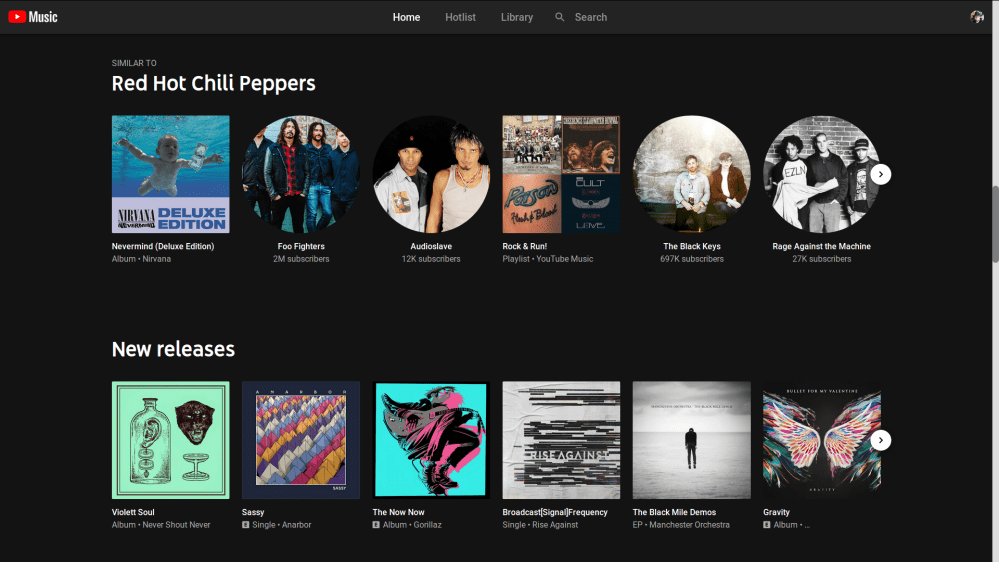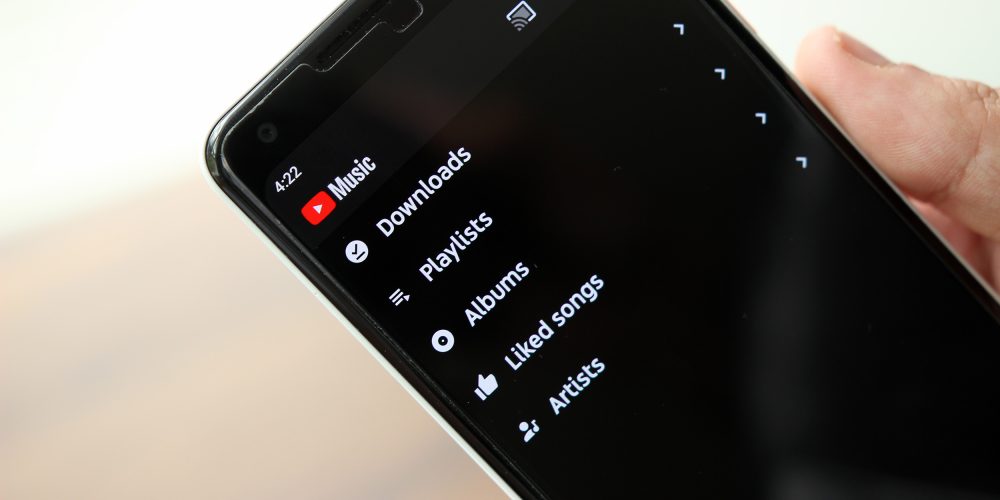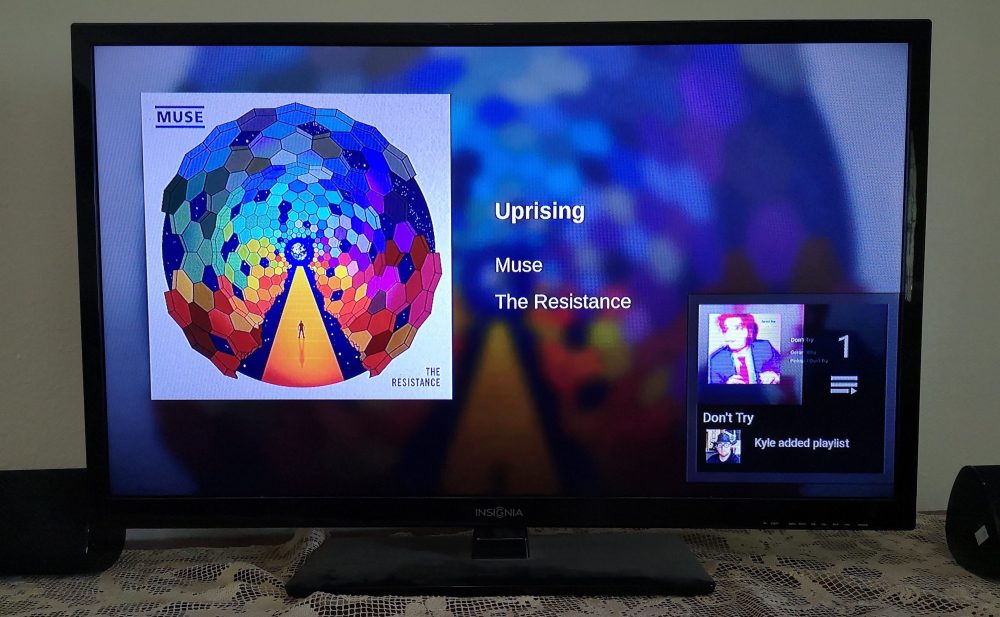Review: How YouTube Music stacks up against Spotify and Pandora
YouTube Music, the latest in Google's long history of attempts at breaking into the music streaming market, launched last month in 17 countries. However, it may be too late for Google's latest attempt at music streaming, as the competition is fierce between veteran services like Spotify and Pandora, newcomers like Deezer and Tidal, and of course Apple Music from Google's biggest competitor. Since launch, we've been using YouTube Music extensively to see how it truly fares against some of these rivals.
A brief history of YouTube Music
Google had its first foray into the music streaming industry in 2011 with Google Play Music (then known as Google Music), which started exclusively as a way to upload your personal music library to Google's cloud, then stream songs back to your phone. Slowly, the service gained the ability to buy songs from the catalogs of major record labels, followed by a full-fledged premium streaming service with All Access in 2013.
However, this wasn't Google's only method for listening to music. Almost since its inception in 2005, people have used YouTube to listen to music for free. It's practically common knowledge that if you wanted to listen to a song on YouTube, you search for the artist and song followed by "lyrics." This, of course, came with its own set of copyright issues until record companies got with the program. Instead of fighting the change, they decided to earn revenue through ads. With this change of heart also came official uploads of music videos.
Toward the end of 2014, Google tried to combine Play Music All Access with YouTube through a program called YouTube Music Key. Music Key allowed the YouTube app to play videos in the background, and was supposed to remove ads from videos with music. However, this initiative was considered a failure, as not all videos that contained music were ad-free like they should have been.
The YouTube status quo changed once again in 2015 with the launch of YouTube Red (now rebranded as YouTube Premium). YouTube Red was a relaunch of Music Key that made YouTube entirely ad-free, not just the music. While this was certainly better for music listeners, it was likely realized that (among other problems) the standard YouTube app is not efficient for finding and queuing up music.
All of this built up to YouTube officially becoming the music streaming service users have always tried to use it as. Relaunched this May, YouTube Music began widely rolling out in June.
My musical history
I've long had a personal music library that I keep on my computer, collected over a few years of being a DJ for an online Shoutcast radio station. (Nostalgia trip, anyone?) I've also kept that library backed up to Google Play Music since it was in beta (so Google should be well aware of my tastes by now). My love of listening to music led me on a journey of discovery in the field of headphones and audio quality.
Lately though, the conveniences of services like Spotify and Pandora (I subscribe to both) have pulled me in to the idea of more casual listening and easy music discovery. Particularly of note, though, is that I have never been a fan of using YouTube for music, as until recently I've considered YouTube to be just a video platform. For this review, I stopped using my other services and used YouTube Music exclusively for a month.
A (humorous) cautionary tale
Like any other new music platform, before you start listening to music you really should teach it about your musical tastes. Unfortunately this isn't as smart of a process as you would hope. No information is carried forward from Google Play Music, which is a major disappointment in some ways, but perhaps a blessing in disguise to those with eclectic libraries (more on that in a minute). Faced with this, I naively picked through my favorite artists and albums and used "Add to Library," assuming that would get the job done quickly.
Armed with my assorted 'Library' I then began playing the Mixtape, YouTube Music's "endless personalized music" feature. My results were… less than stellar.
Obviously something was wrong. Somehow the meme videos from my long, storied YouTube history were being used against me in a court of music. Almost none of the music I had spent time carefully selecting for my Library was in the Mixtape. The reason I found terrified me.
Every video I had ever Liked that could be considered to contain "music" was affecting YouTube's understanding of my taste. This list of Liked Songs should be every new YouTube Music user's first stop, to ensure they have a good baseline. Unfortunately there is no way to "un-Like" a song, so you have to Dislike any offenders.
With this embarrassing problem corrected, and a new understanding gained of YouTube Music's algorithms, I went back through my library, being sure to individually Like my favorite tracks. Doing so resulted in 100% less Shia LaBeouf in my life — jury's still out on whether or not that's an improvement.
The UI
Winner: Spotify, but YouTube Music is less awkward than Pandora.
On both mobile and desktop, YouTube Music seems willing to stray from Google's recent push for the new Google Material Theme, and instead sticks closer to YouTube's own design language, with a nice dose of "night mode" across the board. There's also a desktop client, offered by a third-party, to let you get your jam on with your browser closed, but for the sake of simplicity and fairness in this review, I have not been using it.
In both cases, the interface is fairly slim, with an entire section of the Bottom App Bar (or top bar on web) dedicated to something called the Hotlist, YouTube's current most popular music videos. This list appears to be in no way affected by your personal preferences, instead focusing on your region's interests. I'm sure there are those to whom this would be important, but to me this feature is useless and seems more like YouTube & Google trying to have their own version of the Billboard Top 40.
One of the better parts of the YouTube Music experience is the Home page. Every single aspect of your Home is catered to your personal preferences, including location-based playlist recommendations and new music video releases. This is actually an improvement over Spotify's home which will sometimes push playlists that are somewhat irrelevant to your tastes.
Where Spotify takes the lead is in its Browse menu, which lets you look through playlists and artists organized by genres. YouTube Music currently has nothing that comes close to this, with its search feature seeming to only search playlists by name.

Music Discovery
Winner: Pandora, but YouTube's Artist Page is incredible
YouTube Music has a few different ways to get started listening. Once you've taught YouTube Music about what you like to listen to (and corrected any mistakes of the past) the best place to start is right on the Home page. You'll find personalized recommendations of albums, playlists, and music videos. These are not just tailored to your general tastes, but also to your listening habits based on location or even the weather! YouTube's Home design is very similar to Spotify's, with neither being significantly better or worse than the other.
Featured at the top of the Home page is the Mixtape, which combines all your varied tastes into one "endless" playlist, nearly identical to Pandora's Thumbprint Radio feature. I can very easily listen to my Mixtape for hours on end, with minimal adjustments, as YouTube will tend to stick with what it knows I like.
When you want to hone in on a sound, the "Start Radio" feature is ready and capable to deliver some hours of music similar enough to your starting song or artist. This feature also kicks in automatically when you play any single song, or if an album or playlist finishes.
When compared directly with Pandora's "Start Station", I find that where Pandora is willing to try some experimental songs that can either really hit the mark or fall flat, YouTube Music will play it safe, which results in (sometimes severely) limited variety. Stations started with some songs, like ones from Gorillaz, will exclusively play more songs by the same artist. My preference here leans towards Pandora's method, but of course your mileage may vary.
The area where YouTube Music truly shines, though, is the Artist Page. Each and every artist has a detailed bio explaining who they are, where they're from, and what they've done. Additionally, you may find playlists their music is featured in, including some masterfully crafted ones that must have taken hours to develop. My personal favorite example is "Knights in Queen's Court", a playlist dedicated to musicians that take clear inspiration from Queen.
Selection
Winner: Draw – Spotify's library is consistent but YouTube Music's library is near infinite
On first glance, YouTube Music appears to have a good selection of artists, albums, and songs, including some considered harder to get rights for like The Beatles (which they're happy to boast on the Home page). However it was not difficult to find gaps, with some artists (like Queens of the Stone Age) missing entire albums and other artists missing altogether — where's the love for Nujabes? By this metric, Spotify certainly has the advantage.
But that's just judging from what's officially offered. Where YouTube Music really takes things to the next level is the capability for user content. Fans have been uploading works by their favorite musicians for over 10 years. This means normally unavailable tracks like B-Sides, unreleased songs, and live versions are suddenly on the table. Even tracks from artists who do not license their work for streaming on any platform, like Tool, can be found in YouTube Music thanks to dedicated uploaders.
Sure, the quality isn't always the best, but to have these otherwise inaccessible songs available through a streaming service gives YouTube Music a strong (and almost unfair) advantage over the competition.
Sound quality
Loser: YouTube Music – Anything is better than 128kbps
When it comes to sound quality YouTube falls squarely in last place. When you enable "stats for nerds" in the settings, you can see the current audio (and video) quality of what you're listening to (or watching). Every single test I've done has shown the audio format as "140" which my research says means 128kbps AAC. This is the case for both songs and music videos whether streamed or downloaded.
Pandora offers a step up with 192kbps MP3 and Spotify comes in strong with 320kbps MP3. To most audio enthusiasts 128kbps is unacceptable, and in my personal tests directly comparing them, YouTube Music was completely blown out of the water by Spotify's Extreme quality setting. In particular, you can hear a significant difference in vocal clarity.
"True" audiophiles, of course, would use services like Tidal that can stream full-quality, lossless FLAC format audio. In the real world though, where mobile data has limits and we don't bring high-grade audio equipment on the go, some compromise is acceptable. YouTube Music's 128kbps, however, is past the point of compromise. According to our own Abner and Dylan, YouTube Music may soon be getting more audio quality options, but these seem to only affect music kept offline, not what is streamed.

One more thing absolutely devastates me about YouTube Music's sound quality. There is always a one second gap after one song stops before the next begins, even if you have them downloaded. This means that if you have two songs that are normally meant to seamlessly connect (see: My Chemical Romance, Green Day, Linkin Park and more), instead there is a gap of awkward silence between. This is like a dagger to my ears, and is a fatal flaw that prevents me from listening to music the way I normally do.
Free tier
Winner: YouTube Music on web, Spotify on Android
Almost all streaming services offer an ad-supported free tier, and YouTube Music is no exception. The free tier is actually very liberal by comparison to other services, in that it allows listening to music without shuffling. Spotify, for example, only lets you listen to playlists and albums on shuffle. Pandora, which is always shuffled, limits the amount of times you can skip.
The cost of freedom from shuffle is that YouTube Music must be in the foreground and your phone cannot be locked, just like the standard YouTube app. In a general sense, this means your battery will drain quicker from the extra screen time, but becomes more unforgiving when you consider that your device will also continue to respond to touch. The restriction does not seem to affect the web player however, which gives YouTube Music a strong advantage over the competition.
Integration
Winner: Spotify for now, but this could soon change
When it comes to media apps, Spotify sets the bar for integration. You can use any Spotify compatible device to view and control what's playing on any other Spotify app signed in to your account, regardless of being on the same network or location. I've listened to music on my PlayStation while controlling from my Linux laptop before. YouTube Music's Chromecast experience is solid, allowing any device on your WiFi network to view or skip just like any other Chromecast-compatible app, but pales in comparison to what Spotify Connect can do.
This may not always be the case. As our APK Insight team have also discovered, the YouTube Music APK makes reference to something called "SmartRemote" which could in the future serve as YouTube Music's equivalent to the Spotify Connect system. Until then though, YouTube Music matches vanilla YouTube's Chromecast experience, with the ability for multiple users to collaborate on the queue.

As for integration with the rest of the Google ecosystem, the Google Assistant is more than happy to oblige your requests for songs from YouTube Music. This includes asking for a playlist by name: "Hey Google, play Knights in Queen's Court on YouTube Music."
The thing that surprises me most actually is the lack of Android Auto support. Having access to your streaming service of choice is one of the core features of Auto. And it's not like this is a third-party neglecting Auto, it's Google themselves. Is it a deal breaker? By no means. But I know on many driving occasions I sorely missed the convenience of my in-dash touch UI.
Wrapping it up
All in all, YouTube Music alone most likely won't be converting any subscribers from other services as it doesn't seem to have any one thing that makes it special. And that can be okay, because it's not trying to be special or different. Instead, YouTube Music is trying to be a tailor-made experience for those who have long used YouTube to listen to music. And in that way, Google has succeeded.
YouTube Music in its current form is not, by itself, worth the price of a YouTube Music Premium subscription (currently $9.99 in the US), in comparison to just about any other service. For the same price, Spotify Premium offers the best in class music catalog, sound quality, and multi-device experience. Or for half the price, Pandora Plus gives you a far greater music discovery experience with better audio quality.
On the other hand, if you have YouTube Premium for any other reason (like original series, or just an ad-free YouTube experience), you can probably get by without paying for a separate music streaming subscription.
It's possible that as YouTube Music matures and introduces new features — such as using your personal music library or the still-mysterious SmartRemote — that the pecking order may change and YouTube Music could become the premier online music streaming service. Until such a time, my advice is to hold off.
Check out 9to5Google on YouTube for more news:
VIDEO
#Google #Android #Smartphones #OS #News @ndrdnws #ndrdnws #AndroidNews
